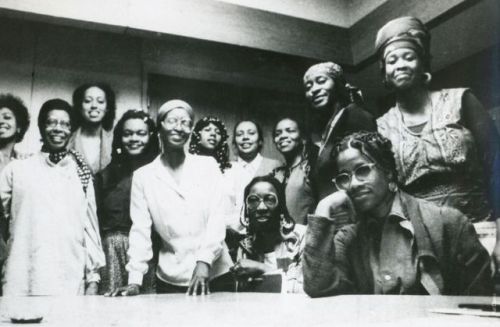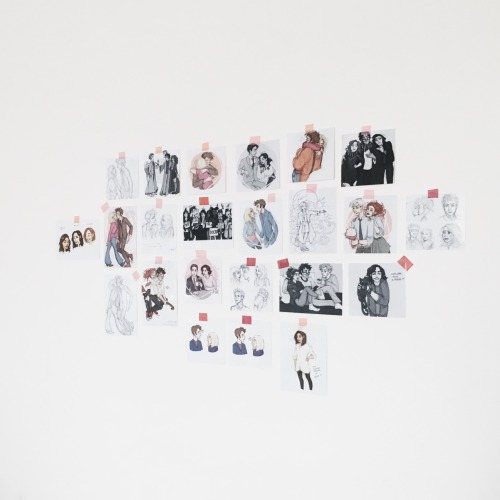I… A Universe Of Atoms, An Atom In The Universe.
I… a universe of atoms, an atom in the universe.
Richard Feynman (via blunt-science)
More Posts from The-grey-areas-blog and Others
that new theme feel (@themecloset the babes)








Some people choose to see the ugliness in this world, the disarray. I choose to see the beauty. To believe there is an order to our days. A purpose.
Living and Working Aboard Station
Join us on Facebook Live for a conversation with astronaut Kate Rubins and the director of the National Institutes for Health on Tuesday, October 18 at 11:15 a.m. ET.
Astronaut Kate Rubins has conducted out of this world research aboard Earth’s only orbiting laboratory. During her time aboard the International Space Station, she became the first person to sequence DNA in space. On Tuesday, she’ll be live on Facebook with National Institute of Health director Francis Collins, who led the effort to map the human genome. You can submit questions for Kate using the hashtag #SpaceChat on Twitter, or during the live event. Here’s a primer on the science this PhD astronaut has been conducting to help inspire your questions:

Kate has a background in genomics (a branch of molecular genetics that deals with the study of genomes,specifically the identification and sequencing of their constituent genes and the application of this knowledge in medicine, pharmacy,agriculture, and other fields). When she began her tenure on the station, zero base pairs of DNA had been sequenced in space. Within just a few weeks, she and the Biomolecule Sequencer team had sequenced their one billionth base of DNA aboard the orbital platform.
“I [have a] genomics background, [so] I get really excited about that kind of stuff,” Rubins said in a downlink shortly after reaching the one billion base pairs sequenced goal.
Learn more about this achievement:
+First DNA Sequencing in Space a Game Changer
+Science in Short: One Billion Base Pairs Sequenced
Why is DNA Sequencing in Space a Big Deal?
A space-based DNA sequencer could identify microbes, diagnose diseases and understand crew member health, and potentially help detect DNA-based life elsewhere in the solar system.
+Why Sequencing DNA in Space is a Big Deal
https://youtu.be/1N0qm8HcFRI
Miss the Reddit AMA on the subject? Here’s a transcript:
+NASA AMA: We just sequenced DNA in space for the first time. Ask us anything!
NASA and Its Partnerships

We’re not doing this alone. Just like the DNA sequencing was a collaborative project with industry, so is the Eli Lilly Hard to Wet Surfaces investigation, which is a partnership between CASIS and Eli Lilly Co. In this experiment aboard the station, astronauts will study how certain materials used in the pharmaceutical industry dissolve in water while in microgravity. Results from this investigation could help improve the design of tablets that dissolve in the body to deliver drugs, thereby improving drug design for medicines used in space and on Earth. Learn more about what we and our partners are doing:
+Eli Lilly Hard to Wet Surfaces – been happening the last week and a half or so
Researchers to Test How Solids Dissolve in Space to Design Better Tablets and Pills on Earth
With our colleagues at the Stanford University School of Medicine, we’re also investigating the effects of spaceflight on stem cell-derived heart cells, specifically how heart muscle tissue, contracts, grows and changes in microgravity and how those changes vary between subjects. Understanding how heart muscle cells change in space improves efforts for studying disease, screening drugs and conducting cell replacement therapy for future space missions. Learn more:
+Heart Cells
+Weekly Recap From the Expedition Lead Scientist for Aug. 18, 2016
It’s Not Just Medicine

Kate and her crew mates have also worked on the combustion experiments.
Kate has also worked on the Bigelow Expandable Activity Module (BEAM), an experimental expandable capsule that docks with the station. As we work on our Journey to Mars, future space habitats are a necessity. BEAM, designed for Mars or other destinations, is a lightweight and relatively simple to construct solution. Kate has recently examined BEAM, currently attached to the station, to take measurements and install sensors.

Kate recently performed a harvest of the Plant RNA Regulation experiment, by removing seed cassettes and stowing them in cold stowage.

The Plant RNA Regulation investigation studies the first steps of gene expression involved in development of roots and shoots. Scientists expect to find new molecules that play a role in how plants adapt and respond to the microgravity environment of space, which provides new insight into growing plants for food and oxygen supplies on long-duration missions. Read more about the experiment:
+Plant RNA Harvest
NASA Astronaut Kate Rubins is participating in several investigations examining changes in her body as a result of living in space. Some of these changes are similar to issues experienced by our elderly on Earth; for example, bone loss (osteoporosis), cardiovascular deconditioning, immune dysfunction, and muscle atrophy. Understanding these changes and how to prevent them in astronauts off the Earth may help improve health for all of us on the Earth. In additional, the crew aboard station is also working on more generalized studies of aging.
+ Study of the effects of aging on C. elegans, a model organism for a range of biological studies.

In early 1971, Kay Brown, Dindga McCannon, and Faith Ringgold gathered a group of black women at McCannon’s Brooklyn home to discuss their common frustrations in trying to build their careers as artists. Excluded from the largely white downtown art world, as well as from the male-dominated black art world, the women found juggling their creative ambitions with their roles as mothers and working heads of households left little time to make and promote their art.
Out of this initial gathering came one of the first exhibitions of professional black women artists. “Where We At”—Black Women Artists, 1971, opened at Acts of Art Gallery in the West Village that June. Adopting the show’s title as their name, the collective began meeting at members’ homes and studios, building support systems for making their work, while assisting each other with personal matters such as childcare.
Influenced by the Black Arts Movement, members worked largely in figurative styles, emphasizing black subjects. While the group engaged politically with racism, their work also spoke to personal experiences of sexism, and members contributed to publications including the Feminist Art Journal and Heresies. Though the group’s mission was not explicitly feminist, Where We At recognized the power of collectivity—empowering black women by creating a network to help attain their professional goals as artists.
Keep reading

Our irrefutable improvement in the last two hundred years. For data source, interactive graphics and details in the data processing see below:
Max Roser (2016) – ‘A history of global living conditions in 5 charts’. Published online at OurWorldInData.org.
High-res

Fungal tissues – the fungal mantle around the root tip and the fungal network of tendrils that penetrates the root of plants, or Hartig Net, between Pinus sylvestris plant root cells – in green. Ectomycorrhizal (ECM) fungi help trees tolerate drought and boost the productivity of bioenergy feedstock trees, including poplar and willow.
Via Berkeley Lab: The sclerotia are in the soil!
More: How Fungi Help Trees Tolerate Drought (Joint Genome Institute)

Cernan was the commander of Apollo 17 in December 1972 – the last lunar mission and one of the final Apollo flights. When Cernan stepped out from lunar module “Challenger” he became the 11th person to walk on the moon. His lunar module pilot, Jack Schmitt, was the 12th. But as commander, Cernan was the last to re-enter the lunar module it give him the designation of being the last person to walk on the lunar surface.
His words would not become as famous as Neil Armstrong’s first sentence spoken from the moon, however, Cernan’s final goodbye to the moon was just as poetic. “America’s challenge of today has forged man’s destiny of tomorrow, and as we leave the Moon, we leave as we came and, God willing we shall return, with peace and hope for all mankind. Godspeed the crew of Apollo 17"
R.I.P Commander Cernan 1934 -2017 More here and here
Actually a really good example to wake you up from this is what you picture in your head when I say terrorist. And then remember that white people have been terrorising the world for a lot longer than the people who you probably imagine.
I struggle to understand why other white people refuse to realise they’re racist. You can be at every rally, supporting every cause, it doesn’t matter. We were raised to be inherently racist, and the sooner you face up to that the sooner you can actually work on solving the problems.
Prejudice is automatic in most of our upbringings, and if you’re living your life saying ‘oh but I’m not racist’, you’re never actually gonna get rid of those prejudices.

-
 leufoltitalyn liked this · 1 year ago
leufoltitalyn liked this · 1 year ago -
 me-melancholy reblogged this · 1 year ago
me-melancholy reblogged this · 1 year ago -
 jouelacommeboutin liked this · 1 year ago
jouelacommeboutin liked this · 1 year ago -
 decantcd reblogged this · 2 years ago
decantcd reblogged this · 2 years ago -
 blackhearted60sherlockian liked this · 3 years ago
blackhearted60sherlockian liked this · 3 years ago -
 inmystateofbuzz reblogged this · 3 years ago
inmystateofbuzz reblogged this · 3 years ago -
 inmystateofbuzz liked this · 3 years ago
inmystateofbuzz liked this · 3 years ago -
 amnesiya liked this · 4 years ago
amnesiya liked this · 4 years ago -
 mrsarma reblogged this · 4 years ago
mrsarma reblogged this · 4 years ago -
 kpopscans liked this · 4 years ago
kpopscans liked this · 4 years ago -
 queenhelenblackthorn liked this · 4 years ago
queenhelenblackthorn liked this · 4 years ago -
 atentativa liked this · 4 years ago
atentativa liked this · 4 years ago -
 ihazelnuttt reblogged this · 4 years ago
ihazelnuttt reblogged this · 4 years ago -
 ihazelnuttt liked this · 4 years ago
ihazelnuttt liked this · 4 years ago -
 itsepion-blog liked this · 4 years ago
itsepion-blog liked this · 4 years ago -
 ho62 liked this · 4 years ago
ho62 liked this · 4 years ago -
 atomicstarburstlabware reblogged this · 4 years ago
atomicstarburstlabware reblogged this · 4 years ago -
 chdeer reblogged this · 4 years ago
chdeer reblogged this · 4 years ago -
 chdeer liked this · 4 years ago
chdeer liked this · 4 years ago -
 monmonshi liked this · 4 years ago
monmonshi liked this · 4 years ago -
 blackcatinthedaark liked this · 4 years ago
blackcatinthedaark liked this · 4 years ago -
 blogtruenorth liked this · 4 years ago
blogtruenorth liked this · 4 years ago -
 wicked-felina reblogged this · 4 years ago
wicked-felina reblogged this · 4 years ago -
 vlachou reblogged this · 4 years ago
vlachou reblogged this · 4 years ago -
 opalia-barns-maximoff reblogged this · 4 years ago
opalia-barns-maximoff reblogged this · 4 years ago -
 nathalywrivera reblogged this · 4 years ago
nathalywrivera reblogged this · 4 years ago -
 zazzzyzaz reblogged this · 5 years ago
zazzzyzaz reblogged this · 5 years ago -
 nocturlabium reblogged this · 5 years ago
nocturlabium reblogged this · 5 years ago -
 mshfar2a liked this · 5 years ago
mshfar2a liked this · 5 years ago
'We're a grey area in a world that doesn't like grey areas'
48 posts



